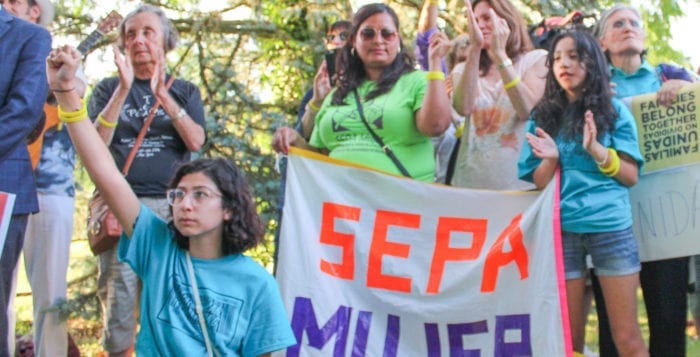Everyone has an opinion on how to handle the border crisis. Having recently gone directly to the southwest border to talk about solutions with U.S. Customs and Border Protection agents, recent migrants and local politicians, several things are clear.

First, contrary to some of the national narratives, most border crossers today come to ports of entry and seek asylum. They do not dart or swarm the locations between ports of entry. Yes, there are some scrambling crossers, but the entire crisis has tipped toward ports of entry, which is why more efficiently processing asylum claims is so important and increasingly difficult.
Second, while human and drug trafficking are serious issues, these individuals do not comprise the bulk of current illegal crossers, even as numbers of Central American refugees continue to rise. Our border laws are designed to deter those sneaking into the country, not managing large volumes turning themselves in — hoping for asylum.
The bulk of those at our borders are economic migrants, some of whom may be entitled to asylum, but all of whom are fleeing a part of this hemisphere overwhelmed by public corruption, poverty, violent crime, drug trafficking and general disorder.
This suggests a need not only for better processing of asylum claims, and more systematic ways of housing asylum seekers, but finding better ways to incentivize these economic migrants to stay in their countries of origin, rather than seeking escape, refuge and opportunity here. Rather than abandoning rule of law programs in these unstable Central American countries, we should be reinforcing stability and the rule of law.
Third, agents in places like Arizona speak with one, clear, consistent voice. They are legally able to monitor and enforce our border, and capture and turn illegal crossers over to U.S. Immigration and Customs Enforcement, but they are not responsible for processing, long-term detention or deportation. In effect, they are a small cog in a big machine, and what they face daily is both severe and growing. What they cannot control is the process of crafting a much-needed political solution.
Finally, no one can seriously discuss the border without discussing drug trafficking. Again, a dose of reality is vital. Drugs entering the United States over the southwest border include heroin, cocaine, marijuana, methamphetamine and fentanyl, as well as other synthetics.
But these drugs are not typically hustled in the dark of night, between ports of entry, over big desert swatches. No, they are methodically trafficked through ports of entry — hidden in trucks and cars, and on rail cars. Many transporting these drugs are mules, beholden to powerful Mexican drug cartels. Poor people who desperately lack options often transport these drugs for the cartels or face death.
Again, the answer must be multifaceted. First, we must work with the Mexican government to enforce their borders and get serious about stopping demand here. Second, we should provide more treatment for those seeking a way out of addiction. Third, and most important, we should be teaching kids to make smart and healthy choices by helping them never to feel desperate enough to turn to addiction.
What lessons can we draw from recent conversations from those on the front lines of our southwest border? Several are obvious. First, we need to have a more organized and efficient system to process the vast number of asylum seekers.
How do we do that? We need more administrative asylum judges, even if reassigned from other tasks temporarily. We need smoother, faster interfaces between CBP, ICE and the judicial system. In managing the U.S. Department of Health and Human Services treatment of unaccompanied minors, who go from ICE to HHS after 20 days, we need more effective ways of protecting and processing claims.
We need to work more closely with the Mexican government to agree on how to house the large numbers, optimally on the Mexican side of the border, which will prevent having to place large numbers of asylum seekers across the United States to await hearings. Finally, we should be asking Mexico to consider becoming a “safe third country” for asylum seekers, which would allow Central Americans to win asylum in Mexico also, reducing pressure on the U.S. border.
Last, and most important, we need to rethink how best to restore rule of law, stability, economic opportunity and foreign investment in Central America, to incentivize economic migrants to remain where they live, and to create opportunities and security there. This requires international engagement, and sustained commitments to neighbors.
In the end, that investment will help us all. That is what going to the border taught me.
Perry Gershon is a national commentator on business, trade, policy and politics. A congressional candidate for New York’s 1st District, he holds a bachelor’s degree from Yale and a master’s in business administration from University of California, Berkeley.





